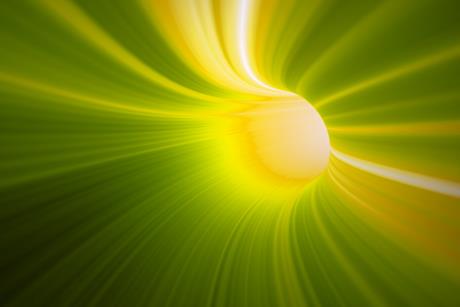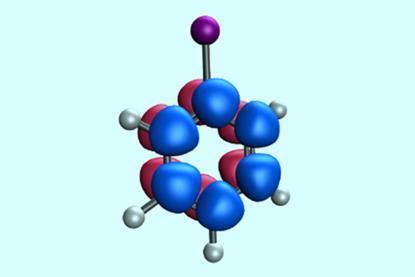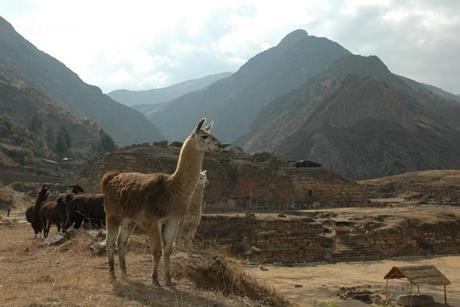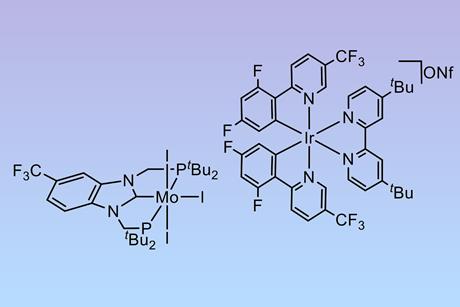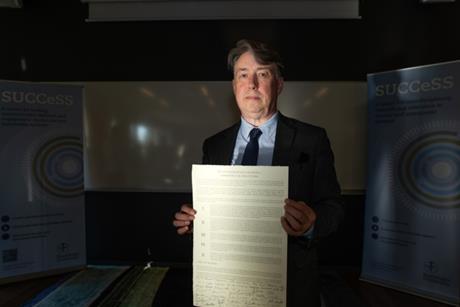Fluorine surprises by becoming heaviest atom ever to quantum tunnel
First experimental evidence of tunnelling in fluorine pushes the boundary of our understanding of chemical bonding
Light-driven catalytic system makes ammonia from nitrogen and water
Dual catalyst system operates under ambient conditions, offering a way to reduce ammonia production’s environmental impact
Strain can unlock electron-donating orbital in tetravalent carbon atoms
Computational study shows how apical carbons in propellanes and pyramidanes can form hydrogen, halogen, chalcogen, pnictogen and tetrel bonds
AFM maps the way collagen unfolds and refolds in the body
New insights could aid understanding of connective tissue disorders
Liquid carbon characterised in the lab for the first time
Designer protein switches conformations like a natural one
Polymer membrane separates hydrocarbons, offering alternative to distillation
Selective C–H bond fluorination enables conformational reporting in a complex natural product
French chemist receives two-year research ban for repeated integrity breaches
Nanocomplex becomes a master of shape-shifting to target tumour cells
Highlights
Fixing medicine’s gender gap
For centuries, the default subject in medicine research and training has been the male. Julia Robinson talks to the scientists and clinicians trying to improve things for the other 51% of humanity
How safe and sustainable are period products?
Millions of people around the world use period products every month. Bárbara Pinho finds out what their environmental footprint is and whether they carry chemicals harmful to human health
Managing the menopause
The end of ovulation will affect almost all women, but current treatments could be improved. Rachel Brazil reports on the efforts to find a better solution
What happens to our bodies after we die?
The decay and decomposition of a human body may be unpleasant to consider, but it can be crucial in criminal justice. Rupali Dabas talks to the forensic scientists developing techniques that can sniff out the truth
Crystal clear structure prediction
As the clouds clear on computational crystal structure prediction, is the technique ready to empower mainstream materials research? James Mitchell Crow reports
Topics
Fluorine surprises by becoming heaviest atom ever to quantum tunnel
First experimental evidence of tunnelling in fluorine pushes the boundary of our understanding of chemical bonding
Strain can unlock electron-donating orbital in tetravalent carbon atoms
Computational study shows how apical carbons in propellanes and pyramidanes can form hydrogen, halogen, chalcogen, pnictogen and tetrel bonds
Bridging the gap between Hammett parameters and the electronic structure of aromatic systems
Occupation of effective atomic orbitals used to quantify and predict Hammett parameters
AI predicts transition states with exceptional precision
Accelerating chemical discovery through high-throughput experimentation: in conversation with Matthew Gaunt
Amino acid sequences used to predict enzyme stereoselectivity
AI inspired by AlphaFold can predict chromatin structures found in chromosomes
Computational study says nucleophile finds σ-holes more attractive than π-holes
Snuff tube residues push back date of oldest hallucinogen use in Peruvian Andes
Chemical analysis reveals traces of a number of psychoactive compounds thought to have been used to secure leaders’ status
After-school club students in Chicago discover promising bioactive compound via goose droppings
Chicago antibiotic discovery lab engages middle school students from underrepresented communities in hands-on research
Chemists use AI to uncover pigments used on Berlin Wall murals
Researchers hope work will help to preserve this art
Teaching enzymes new reactions through genetic code expansion and directed evolution
Anthony Green’s research group at the University of Manchester, UK, reengineers enzymes to have catalytic functions beyond those found in nature
Light-driven catalytic system makes ammonia from nitrogen and water
Dual catalyst system operates under ambient conditions, offering a way to reduce ammonia production’s environmental impact
‘Chemistry changed the world before, we just need to do it again’: Stockholm declaration reimagines future
Paul Anastas talks to Chemistry World about organising call for chemistry to transform itself and make the world more sustainable
Chemists urged to build a greener future by Stockholm declaration document
‘Father of green chemistry’ Paul Anastas among those spearheading call to action
Seed oil-based polymer should survive a day in the rain but degrade within years in the sea
Researchers create polyesteramides from brassylic acid and explore their potential as a replacement for polyethylene
Paul Anastas: ‘I’m proudest of being part of a global green chemistry community’
The father of green chemistry on his love of the environment, striving for unattainable perfection and breathing life into an old town library
Science needs to get its house in order when it comes to energy use and waste
Labs have an outsized environmental footprint but solutions are within reach
‘Chemistry changed the world before, we just need to do it again’: Stockholm declaration reimagines future
Paul Anastas talks to Chemistry World about organising call for chemistry to transform itself and make the world more sustainable
Alan Turing papers expected to sell for thousands after narrowly missing the shredder
Collection includes personal copy of Turing’s sole chemistry paper
Normalising huge substrate scopes worsens wellbeing
And holds up the pace of scientific progress
Clarivate to exclude retracted content when calculating impact factor
Move will ‘pre-emptively guard’ against distortions to journal metric
French chemist receives two-year research ban for repeated integrity breaches
Exclusion for nanomedicine researcher at CNRS will start in 2026
